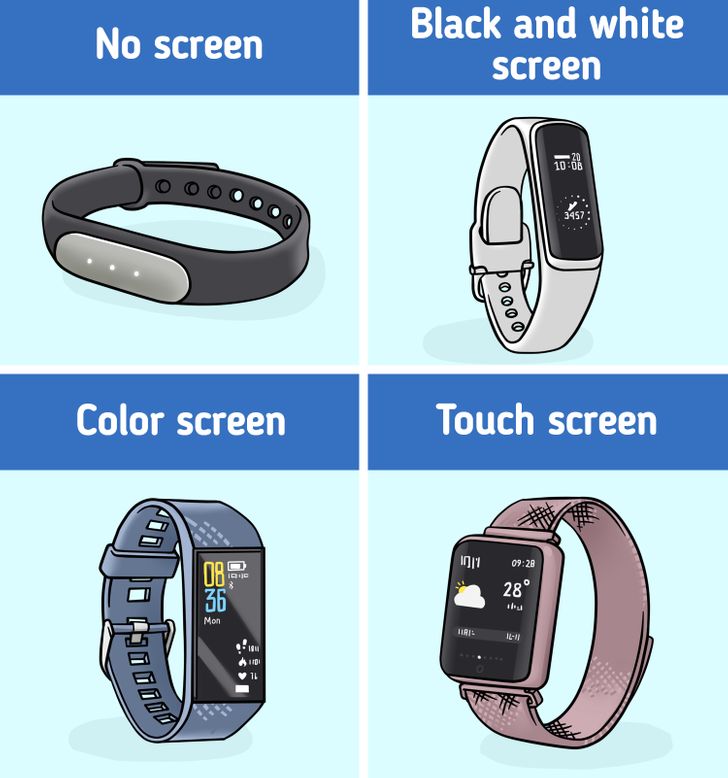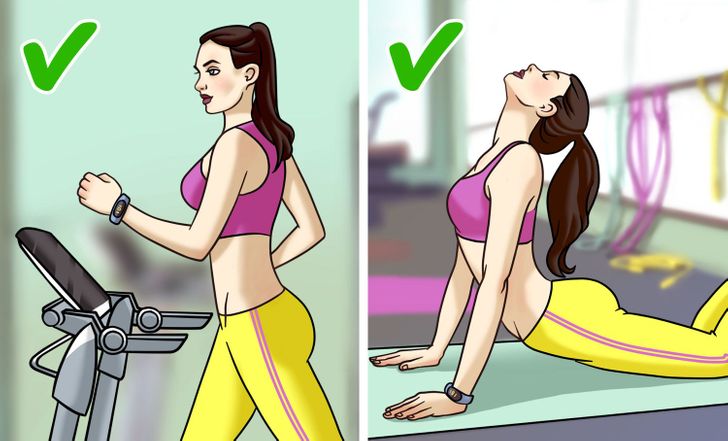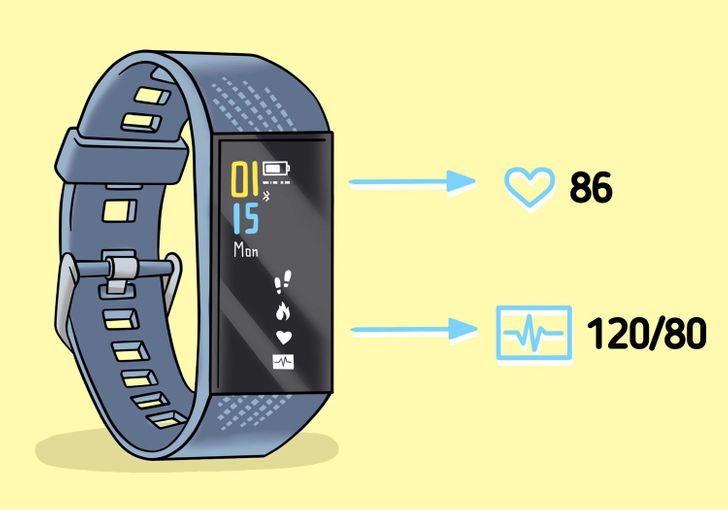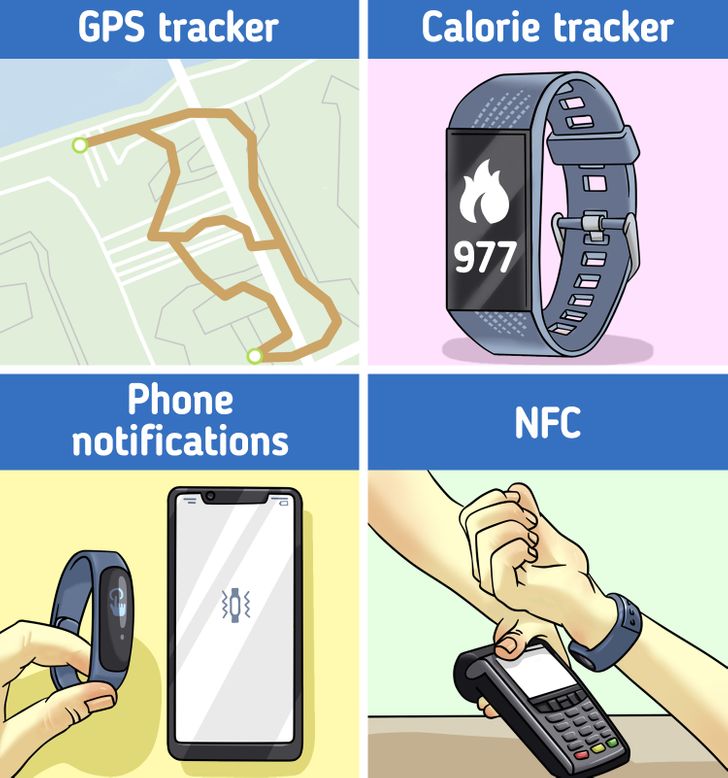How to Choose a Fitness Tracker
A fitness tracker is a device that registers your physical activity during the day. It tracks your steps, your heartbeat, and your blood pressure. It also monitors your sleep and wakes you up in the morning with a soft vibration, instead of loud noise like a regular alarm. Very often, people buy fitness trackers to be more motivated and disciplined: the stats they get every day help them stay strong and figure out whether they need to get more physical activity.
If you have an active lifestyle, you might need a fitness tracker. 5-Minute Crafts has reviewed the most important parameters you need to take into account when buying this kind of device.
Technical specifications

-
Screen. It can be a regular screen or a touch screen. The touch screens are usually bigger and they often show the stats very clearly. The screen can be black and white or color. The color screens drain the battery much faster. There are devices without screens and they are great if you don’t want to get carried away with the statistics. All the information will be on your phone.
-
The look and the size. Fitness trackers are sold as bracelets for the wrist or the ankle. The ones for the ankle are better for runners. A classic fitness tracker for the wrist should be tried on before you buy it, to make sure it’s the right size.
-
Battery. Check the battery life of the device. Some trackers are very efficient and the batteries last for 2-3 weeks. Others kill the battery in several days and you have to charge them regularly.
-
Memory. Some bracelets can be used as players and you can listen to music if you connect them to your phone and upload the files into the memory. Buy a tracker with at least 4 GB of memory storage. That’s 300 songs.
-
Voice control. You can control the device with your voice when your hands are busy.
Functions and modes

-
Step tracker. The main function of a fitness bracelet is to track the number of steps you take every day. The application has a recommended number, but you can set your own goal, like for example, 10,000 steps a day.
-
Running. In this mode, a fitness bracelet collects data about speed, distance, time, and intensity. More expensive models can track the length and the cadence of your steps — the frequency of how your feet touch the ground.
-
Swimming. A tracker can count the time that you worked out and the distance you swam. The tracker must be waterproof to make sure it doesn’t break in the water.
-
Others. Bracelets can track the activity on the elliptical, while mountain climbing, during yoga or Pilates, and while riding a bike or ice skating. The data on the number of steps is adjusted to the activity type.
Heartbeat and blood pressure

-
Heart monitor. This is a very important function if you work out hard and a lot. Many bracelets calculate the average heartbeat at rest and the maximum numbers.
-
Blood pressure control. This is great if you want to find out how different types of physical activity affect your blood pressure. The application collects stats by day, month, and year and these are great to show to a doctor.
Alarm and sleep tracker

-
Sleep phase tracker. Most trackers know what time you fall asleep, what time you wake up, how long you sleep, and how long you spend in the phases of fast or slow sleep. This data can help you to find problems with sleep and normalize it.
-
Alarm. This is great if you want to get up without stress: it will wake you up with a vibration. You can set a specific time or a time period, for example, from 7:00 until 7:30. In this case, it will find the best time to wake you up, according to your current sleep phase.
Phone application
-
Compatibility. There should be a special mobile application for your phone and you can use it to watch the statistics. It will be either Android or iOS.
-
Personal coach. Some apps offer workout programs you can use in real-time. If you need this function, it’s better to buy a tracker with a voice assistant that can help you to do certain exercises correctly and help you achieve your goals.
Additional functions

-
GPS tracker. This is good if you run fast or walk in new places. The tracker can find your location and form a map of the path you made.
-
Calorie tracker. It counts how many calories you spend on physical activity depending on the mode: walking, running, swimming, yoga, and so on. The calculation is based on your heartbeat and the average numbers for your height, weight, and age.
-
Phone notifications. You can set the bracelet to notify you about the calls and messages you get on your phone.
-
NFC. This chip allows you to pay for your purchases with your bracelet. It’s great if you don’t have your bank card with you and you don’t want to reach for your phone.